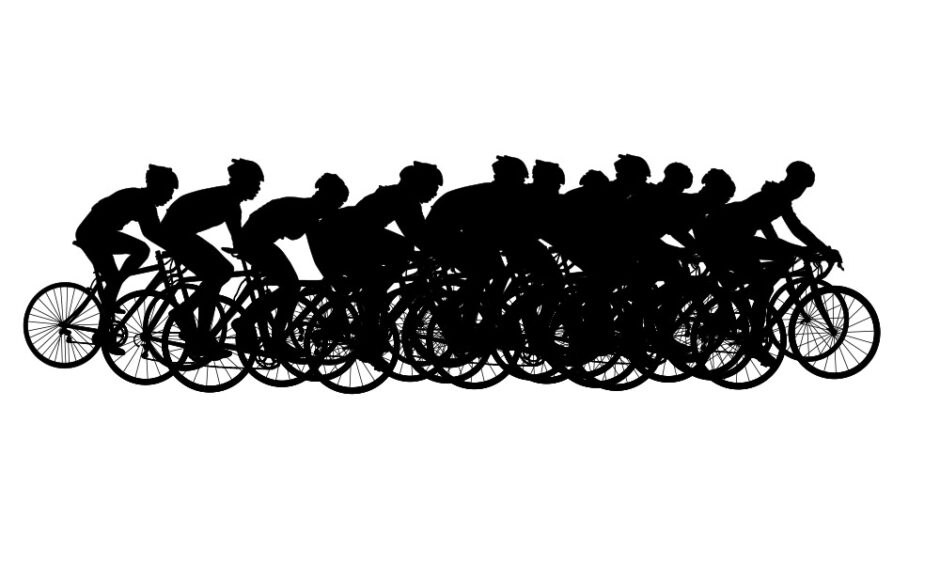I’ve never been much of a gearhead, nor am I mechanically inclined. In fact, I’ve been bike riding most of my life and if I change a flat successfully, it’s Miller Time. Technology is not my friend, either. The fact that I was able to type this column on my laptop without any technical glitches is sheer luck. When I receive prompts to update this program or download that new software, I routinely ignore them based on my stubborn belief that if it ain’t broke, don’t fix it. (I also do this because on the rare occasions when I click “update,” something invariably goes wrong.) Alas, I live in fear of what my wife calls the “spinning beachball of death.” Sooner or later, it appears on my screen, and whatever I was working on disappears unsaved into the ether. I don’t want to have to upgrade—everything and far too often. I’m content living a 1.0 existence.
At least, I thought I was—until recently. June 7th, to be precise. That’s when “Otto” arrived, my new Italian race bike. While I’ve owned decent bikes before, I went all out this time, embracing all the latest, top-of-the-line technologies—from disc brakes to a handmade carbon frame to carbon wheels, etc., etc. The gearhead who guided me through this custom build assured me that my investment would pay quantifiable dividends in terms of performance, speed, durability and comfort, not to mention enjoyment. The number of style points you get from riding a boutique, Italian brand (in stunning burnt orange, no less) isn’t really calculable in New York City, the mecca of “my race bike is snazzier than yours.” Still, I was somewhat skeptical that Otto would live up to the hype. It’s not like I was making the jump from a Pinto to a Porsche. Just how much of an upgrade could this really be?
A lot. Otto is faster, smoother, quieter, more responsive and stiffer (more efficient) than any bike I’ve ever ridden. Not. Even. Close. The disc brakes alone are worth the investment because the more responsive stopping power is an immeasurable safety upgrade, and you can’t put a price tag on that. What’s more, I’m basically the same rider, riding on the same roads, yet the same brand of tires I had on my previous bike are lasting hundreds of miles more and counting. That’s how much more efficient this fine-tuned machine is, providing a savings that will add up as the miles roll on. Most of all, it’s just super fun riding a great (and great-looking) bike. I’ve seen the technology light. My gearhead baptism has opened my eyes to a world of other potential upgrades and given me a greater appreciation for gearheads far and wide!
Which brings me to a bandsaw—namely the one Brad Gebhard, CEO of Propét Footwear and subject of this issue’s Q&A (p. 10), had installed in the company’s Auburn, WA, headquarters soon after his arrival in early August. Gebhard, a former member of the U.S. National Cycling Team, is a total gearhead. His bike racer mentality leads him to constantly seek a competitive edge, and technology often provides one. To that end, Gebhard has been wear-testing various Propét styles nearly every day since his arrival to see if they meet his “world-class footwear” expectations. They rarely fall short, but when they do he goes to the bandsaw for a deep product dive to find the problem—and the solution. Gebhard believes no amount of marketing and sales savvy can cover for inferior product. It’s a good, better, best or bust approach—a management philosophy that extends to all facets of the 37-year-old company that, he believes, has tremendous growth potential within its existing customer base and beyond. It looks to be an exciting ride.
Fellow gearheads are highlighted throughout this issue. Our Defining Comfort feature (p. 20) profiles executives from seven leading brands about their latest product upgrades. The styles range from cowboy boots to kicks to clogs, affirming that comfort is a baseline expectation across nearly all categories today. How could it not be for generations who’ve grown up sporting performance sneakers as everyday wear? That obvious incentive aside, so-called “brown shoe” brands that are embracing a gearhead approach should make for more lively competition overall, which should foster further product upgrades in the seasons ahead, which will benefit all consumers. It’s a win-win-win.
The gearhead approach is not just for corporate conglomerates and their extensive R&D departments. Jackie Lindstedt, owner/designer of Jax & Bard (Shoe Salon, p. 46), is all about the technical attributes behind her relatively small, made-in-Maine, wood clog brand. It’s a unique recipe that blends sustainable design practices with modern upper constructions and materials atop a classic wood sole—proving that great technology doesn’t have to be new. A veteran designer who has worked for many big-name brands, Lindstedt boasts an inspiring DIY drive. The company, which debuted 13 years ago, is on the verge of its biggest year ever. Lindstedt has hung in there, always innovating to upgrade her collections. She’s earned her place in our industry’s fast-moving, ever-shifting peloton of brands. The great race continues.




